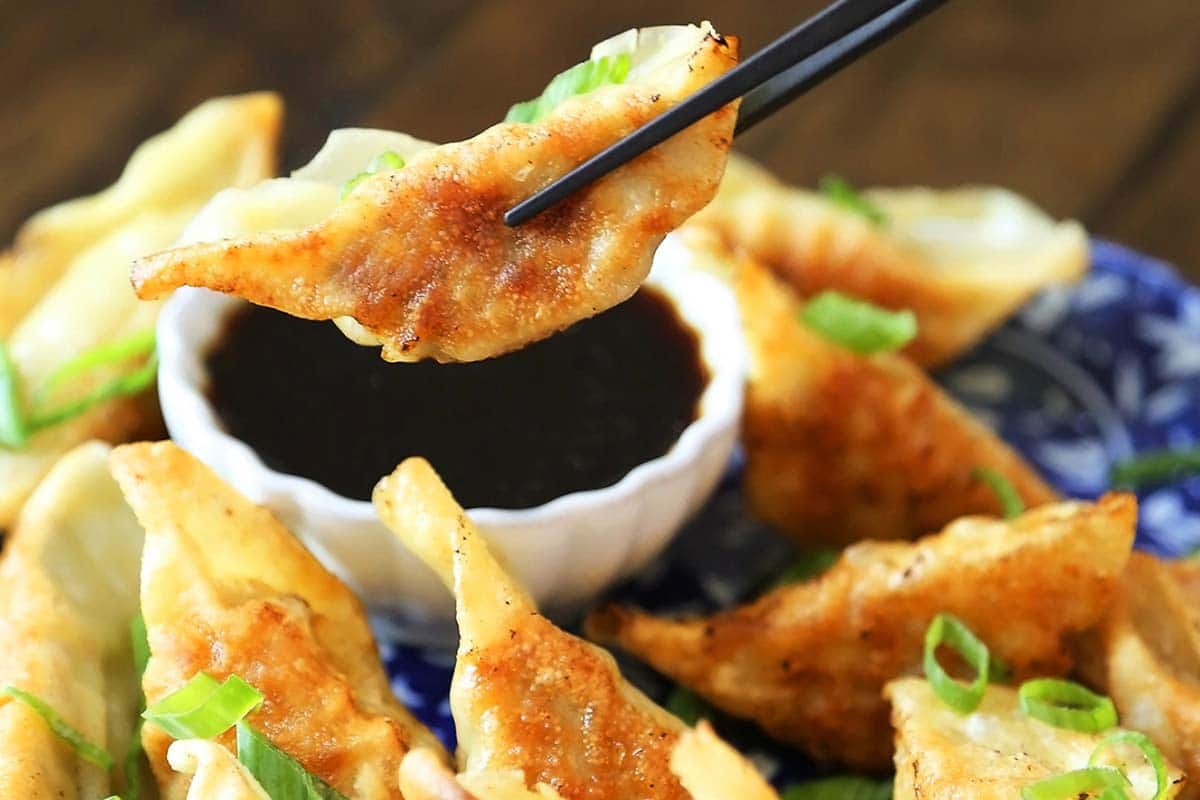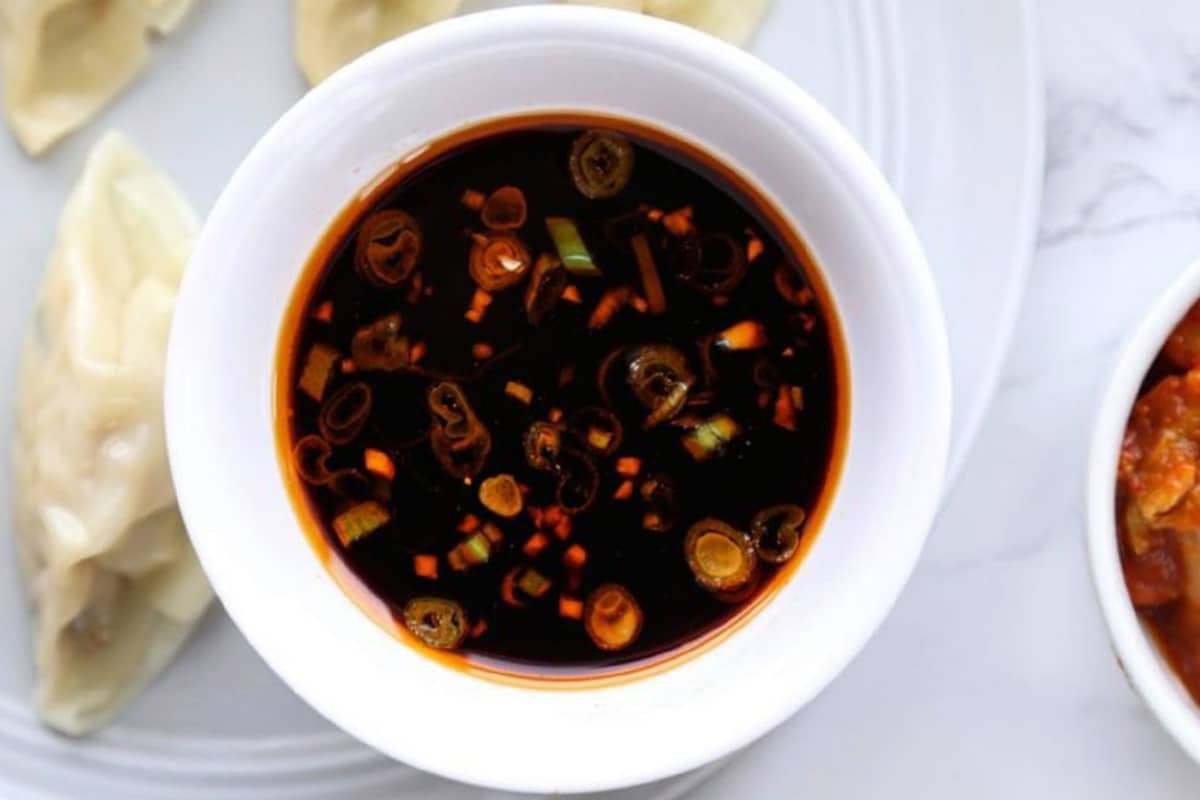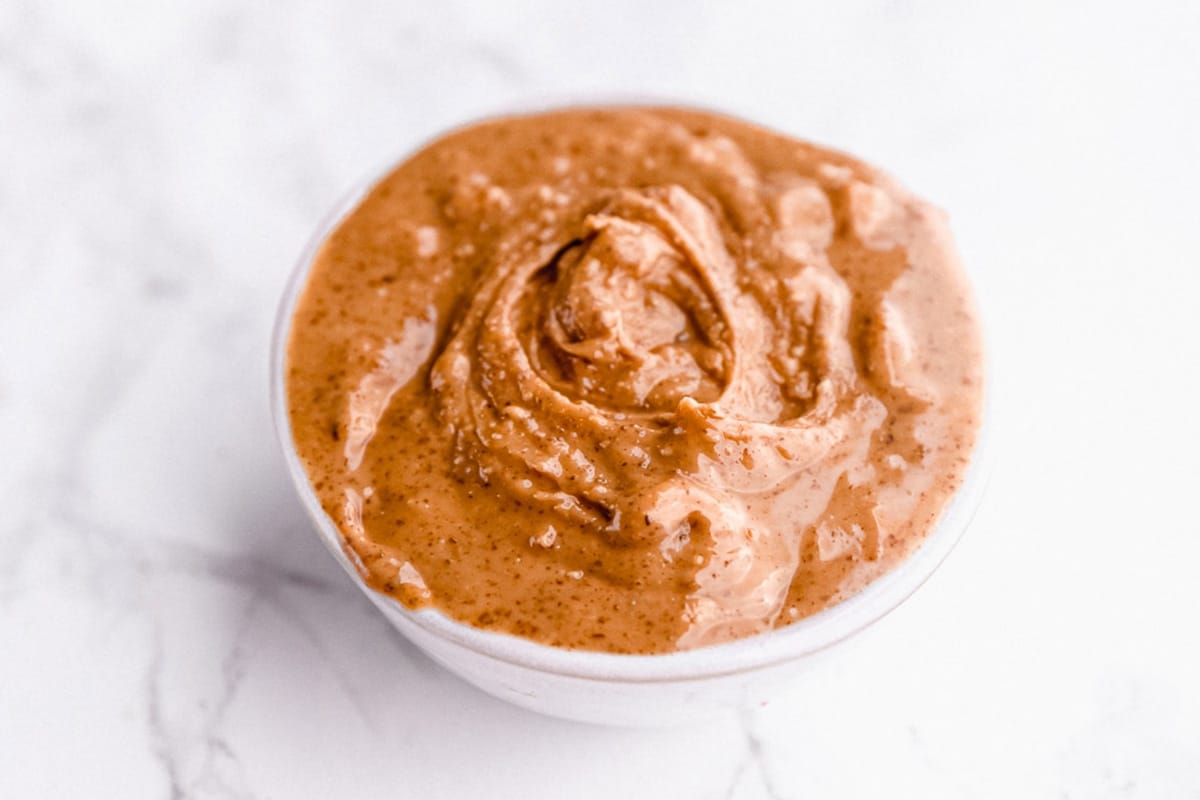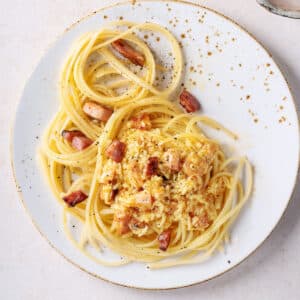There is nothing much more unpalatable than cold, chewy dumplings. That's what you get if you eat them straight from being stored in your fridge.
You can eat them chilled if you must, but only when they have cooled straight after being freshly cooked.
Regardless of where you are in our modern, civilized world, you will find Chinese cuisine and Chinese dumplings in particular.
Having said that, not all dumplings are the same. They vary from region to region.

You can enjoy them as they are, as a standalone dish, or you can serve them in other ways.
As they are so popular, many home cooks make them in batches and store them in fridges or freezers to use later.
Exactly what are dumplings?
A Chinese dumpling consists of a wrapper made from dough that contains some filling or dough sans the filling.
The base of the dough can be bread, flour, or potatoes, and the filling can be a combination of meat, fish, cheese, and vegetables when it comes to making savory Chinese dumplings (Jiaozi) or fruits when making sweet Chinese dumplings.
However, the Japanese also make them, and their native name is Gyoza. Other Asian countries like Sri Lanka, Thailand, and Vietnam have their own variants.
What are dumplings made of?
You can make a basic dumpling dough mixture from these three basic ingredients:
- flour (but the flour can be various types - bread, flour, or even potato.)
- salt
- water
- fillings of your choice
Some people make basic dumplings from wheat flour; however, the dough for Chinese shrimp dumplings is known as "Har Gow." You can make this type of dumpling using a combination of wheat and tapioca starch.
See what I mean? The variations are almost endless.
Savory or sweet, whatever you prefer, you can create them in several different ways. Either you steam them, pan-fry, or deep fry, the choice is yours. You can serve them as the main attraction, soup, or a tasty side dish.
The best way to store dumplings
Once cooked, you can store Asian dumplings in your fridge or freezer. If you refrigerate them, they will be good for up to three or four days.
As far as freezing them goes, when appropriately frozen - something I will talk about in more detail a little later - they will keep in good condition for up to three months.
How to reheat dumplings
Reheating dumplings is a little trickier than you might think. It's not easy to get them just right so that you can warm the leftovers properly.
Tucking into a reheated dumpling with a lovely warmth but finding the inner filling cold can be disappointing.
When deciding which way will be best to reheat, pre-cooked dumplings are necessary. For me, reheating them using the same cooking method you used when you first made them is the way to go.
But whichever way you decide to reheat dumplings, you must always think about the thickness and integrity of the wrapper. Also, consider handling thinly wrapped dumplings with care.
In my experience (and I have cooked and reheated thousands of dumplings in my time), I have tried various reheating methods.
- I have steamed them - getting the best result of all.
- Or microwaved - fast but not a great result.
- Re-boiled - and got the worst outcome.
But regardless of which method of reheating you choose, you must never forget that they are very fragile and need handling with care.
If you are too heavy-handed, or the heating proves too vigorous, the wrapper will split, and all that lovely stuffing will leak out into the pan.
Wonton soup with empty Wonton wrappers has been known to make grown men cry - and ladies and kids too.
Choose the correct method.
I have outlined above three ways you can reheat dumplings. As mentioned earlier, the key is selecting a reheating method while considering how you cooked them in the first place.
How to reheat steamed dumplings
As per my experience, steaming is the best way of reheating previously steamed dumplings. However, it would be best if you gently reheated them.
If you are too heavy-handed and the wrappers are quite thin, you know what could happen. They will split, and the filling will leach out.
Ideally, it would be best if you used a bamboo steamer. If you don't have one, check out this article. They are not expensive. Alternatively, you can use a metal steamer.
Read: How to Clean a Bamboo Steamer (4 Ways)
Here's what to do:
- Arrange parchment paper on the inside base of your steamer. Make sure there are some air gaps (or perforated holes) around the edges for heat circulation so that the steam can get to the dumplings.
- Put the lid in place. It should be tight fitting.
- Steam for several minutes until thoroughly warmed. Look for an internal temperature of 70°C.
How to reheat pan-fried dumplings
If you haven't come across the expression before, "potstickers" are dumplings that are pan-fried. One of the key attractions of potstickers is their gorgeously crunchy bases.
Steaming them is a no-no because it would make them soggy. The only way of reheating and recreating that lovely crunchiness is to pan-fry them again.

Here's how:
- If refrigerated, remove from the fridge and allow to come up to room temperature.
- Pour a small amount of water into a pan, position the pan on your stovetop over medium to high heat, and wait until it begins to boil.
- Carefully add the dumplings to the boiling water (so as not to splash yourself) and fix them with a tight-fitting lid in place.
- Allow the water to evaporate. By the time this happens, the dumplings will have warmed through.
- This next step is to make the dumplings nice and crunchy.
- Set the dumplings to one side and add a tablespoon of oil into the pan. The reason for putting the dumplings to one side is to ensure they don't contact the oil until it is nice and hot, or they will simply soak up the oil.
- Once the oil is hot, mix the dumplings back in and cook on all sides until they are lovely and crispy.
Extra tip:
Don't stand on a paper kitchen towel when removing the pan's dumplings. If you do, although the towel will absorb any excess oil, it will also make the dumplings soggy.
Read: 3 Ways How to Reheat Potstickers
Reheating dumplings from frozen
Remove the dumplings from the freezer, transfer them to your fridge and leave them overnight to thaw. This is the best way of thawing frozen dumplings.
If you try and accelerate the process by leaving them out at room temperature, you will run the risk of generating bacterial contamination.
Once they have thawed thoroughly, it's time to reheat them using the pan-frying method.
Read: Frozen Potstickers Dumplings Air Fryer
Note:
Bearing in mind what I said about reheating the leftover dumplings the same way you originally cooked them.
If you're in a rush, you can always reheat frozen dumplings by steaming them and boiling them directly from the freezer. The downside is that this will give you soggier dumplings.
Can you reheat dumplings in the microwave?
Some people can't be bothered to reheat their dumplings by steaming or pan-frying, and instead, they prefer to reheat them in their microwaves.
It's understandable as reheating anything in a microwave is quick and easy.
However, it's not always the best solution, depending on how you like your dumplings, crispy or not. Reheating them in the microwave will tend to make them soggy.
There is also the risk of overheating them and ending up with a somewhat stodgy, chewy dumpling.
Follow these steps for the best result:
- Transfer the dumplings into a microwave-safe container and sprinkle a few drops of water to create steam and prevent them from drying up.
- Place a clean white towel or a sheet of wet kitchen paper towel loosely over the container.
- It will take approximately 1 minute to heat through, depending on the number you are reheating and the power rating of your microwave. If the rating is over 700W, the cooking time is around 45 seconds.
For me, this is not the best option, even though it is the simplest. It is, however, essential to add a little water to ensure the dumplings don't dry up during the microwaving process.
How about freezing dumplings?
As mentioned earlier, let me tell you the best way to freeze the dumplings to get the best taste when defrosted and reheated.
Before you prepare your dumplings for freezing, the most important thing is to allow them to cool down to room temperature. Doing this guarantees that they can be defrosted and reheated later with complete safety.
However, make sure they do not sit out at room temperature for longer than two hours. If you leave them out for longer, bacteria will start to proliferate.
Follow these steps to maximize the taste when defrosting later:
- Let your dumplings cool down before storage.
- Take a flat tray and line it with greaseproof paper.
- Lay the dumplings out on the parchment paper and ensure there is space in between them, so they are not touching each other at any point.
- Spray them lightly with a thin film of cooking oil.
Note:
Spraying them with oil is a safety measure to ensure they do not stick together. If they do, you will have the devil's own job of trying to separate them, and in the process, the wrappers will probably get damaged, and they will be useless.
- Carefully place the tray of dumplings into the freezer, ensuring none of the dumplings are touching each other, and leave overnight.
- Once solidly frozen, you can repack them into serving sizes the next day.
What fillings can I use for my dumplings?
The best thing about dumplings is, of course, the filling. The wrappers are pretty scrummy too. Remember too that you can make savory or sweet dumplings.
It depends on where you are in Asia and which fillings you will come across. Some of the most popular universally are:
- Chicken and mushroom
- Chicken and cabbage
- Minced pork and bok choy
- Mixed veggies - carrots, celery, etc.
- Shrimp
- Spicy ground beef
- Mixed pork and shrimp
- Pork and cabbage
- Sweet sesame
How to make shumai:
These open-faced dumplings or Shumai (燒賣) or Siu Mai are juicy and flavorful. Filled with ground pork, shrimps, and mushrooms, they are often served at dim sum and can be easily made at home.
7 varieties of dumplings
As you can see, there are lots of different types of fillings. However, generally speaking, they tend to get categorized into two main groups:
- Crescent-shaped dumplings, known as Gao
- Round or purse-shaped dumplings known as Bao.
But for each of these two main types, there are many different types of wrapper dough, dumpling fillings, and cooking methods. The permutations seem almost limitless.
Here is a roundup of the seven most common types:
1 Jiaozi Dumplings
The most common Chinese dumpling type, Jiaozi (pronounced "jow-zee"), falls into the crescent-shaped category. The wrappers are opaque, made from wheat flour, salt, and a little water.
Usually filled with cabbage, onions, and ground pork or beef, these dumplings are often served with a dipping sauce combining sesame oil, soy sauce, and vinegar.
Jiaozi is more of a generic term. Depending on the way you cook them, the name changes.
- Boiled, they are known as Shui Jiao
- Steamed, they call them Zheng Jiao,
- When pan-fried (potstickers), they are called Jiao Jiao, or Guo Tie.
2 Siu Mai
This dumpling is of the Bao type - the open-top basket or purse shape.
Siu Mai (pronounced as "shoo-my") has a wrapper made from wheat dough. They are popular not only in China but in other Asian countries.
Traditionally, the main ingredients of the fillings are ground pork and shrimp, plus ginger, some green onion, and mushroom.
Siu Mai can often be identified by an orange dot of fish roe, or sometimes carrot, or by a green dot, courtesy of a lone pea. They are cooked in a bamboo steamer.
3 Har Gow
Har Gow (pronounced as "Ha-gow") are crescent-shaped dumplings. You can make the wrappers from wheat and tapioca starch translucent and should be constructed and closed with seven or ten pleats.
The wrappers are smooth, soft, and a little stretchy. They are generally filled with pork fat, bamboo shoots, shrimp, and steam cooked.
The cooking turns the pork fat into liquid, giving the dumpling a firm, juicy bite.

4 Xiao Long Bao
Xiao Long Bao is shaped like a round purse, crimped at the top. It is a soup dumpling - not a dumpling filled with soup - but cooked in soup. The filling is either chopped crab or pork plus some pork collagen.
The collagen liquifies when cooked and makes a rich, savory broth.
As with Siu Mai and Har Gow, Xiao Long Bao dumplings are often served as part of a dim sum dish.

5 Sheng Jian Bao
A close cousin of the Xian Long Bao dumpling, the Sheng Jian Bao dumpling contains the same filling options, but the dough from which the wrapper is made is slightly thicker. They usually come with chopped scallion and sesame oil garnish when served.
They are cooked slightly differently, in a skillet, only partially filled with water. It means that the dumplings are steamed rather than boiled, and when the water disappears, it gives this dumpling its characteristic potsticker crunchiness.
As well as pork, you can make the filling with chicken, crab, or shrimp.
6 BaoZi
The BaoZi (包子), or simply Bao, is a dumpling assembled using thick wheat dough, making it look somewhat like a bun. A prevalent variety of BaoZi is known as Char Siu Bao, which has a BBQ pork filling.
Other variations include:
- Tangbao: Similar to Sheng Jiang Bao and Xian Long Bao, Tang baozi dumplings contain a broth drunk via a straw.
- Dou Sha Bao: A dumpling filled with a paste made from sweet red beans.
- Nai Wong Bao: This is a desert dumpling filled with a saccharine yellow custard.
7 Wontons
This is another dumpling term generic in its approach. Wontons can contain many fillings and can be cooked by boiling, pan-frying, or steaming.
This all-time favorite recipe is made of a thin square layer of wheat flour, egg, and water dough wrappers. Then, you can spoon over the filling into the center of the square.
The top layer is then added and crimped together around the edge, creating a dome in the middle where the filling is.
You can create typical fillings like pork or shrimp, or a combination of both, although, with many dumplings, the fillings vary according to region.
They are usually boiled and served in a broth-like soup. The Japanese version of Wontons contains ground beef and is fried.

8 Dipping sauce recipes
Wherever you have an Asian dumpling, a delicious dipping sauce is not usually far behind.
Asian restaurants worldwide serve various types of dumplings with some fantastic dipping sauces.
Let's discuss eight of the most popular with you right now.
1 Hot chili oil
Hot chili oil is one of those essentials most Chinese restaurants serve with dumplings. If you're making dumplings at home, you can also make your own version of this sauce, and you only need a few commonly available ingredients.
This hot and spicy sauce combines Chinese wonderfully with noodles and most stir-fry dishes. You can make it in a batch, transfer it into an airtight jar, and refrigerate for up to one month.

2 Soy Ginger Sauce
Soy Ginger dipping sauce is an excellent condiment for any Asian dumpling. It is umami-rich and super easy to make at home, needing only four ingredients - ginger (finely grated), sesame oil, soy sauce, and a smidgen of white pepper.
This sauce is a lovely marinade for seafood or mixing and giving flavor to a plate of rice or noodles.

3 Dumpling dipping sauce
Instead of using store-bought dumpling dipping sauce, why not make your own?
The advantage of DIY dumpling dipping sauce is that you can alter the seasoning blend to make it as spicy or tangy as you like.
Ingredients-wise all you need is some minced garlic, rice wine vinegar, sesame oil, soy sauce, and a smidgen of hot chili. Experiment with the blend and make it your own.

4 Chinese plum sauce
Chinese plum sauce, also known as Chinese duck sauce, is a gorgeous rich-tasting concoction of apricots, plums, sugar, and a few spices.
You can make this yourself at home with relative ease, but it does need a little while to stand and let the flavors and texture develop.
Take a look at this recipe.
5 Thai peanut sauce
Thai peanut sauce is a heaven-sent sauce that no self-respecting satay would be served without. This Thai peanut sauce is relatively easy to make at home.
All you need are:
- dry roast peanuts.
- Sesame oil.
- Dark soy sauce.
- Garlic.
- other Thai ingredients
As well as being perfect, if only, accompaniment to a satay dish, it is also an excellent dip for grilled tofu and lots of other cooked meats, as well as being amazing when drizzled over a cold noodle salad.

6 Hoisin Dipping Sauce
Cantonese Hoisin dipping sauce is a sticky flavor sensation of a sauce that can be served as a condiment to accompany Asian dumplings and stir-fries. It is also perfect for a marinade.
Used in iconic recipes such as General Tso's chicken, this blend of garlic honey, miso, peanut butter, soy sauce, and rice wine vinegar makes Hoisin sauce unique.
The store-bought stuff is pretty good, but try the recipe for the best sauce. It takes it to the next level.
7 Sweet and sour sauce
This may be the most well-known of all Chinese dipping sauces. Whether used as a dipping sauce for Chinese dumplings or western chicken nuggets, it is a flavor sensation.
It even works brilliantly well on burgers.
Again, you can buy it in supermarkets and Asian grocery stores, and they taste great, but for an out-of-this-world sweet and sour sauce, try this recipe.
8 Tamarind Dipping Sauce
The tamarind dipping sauce is not easy to find in supermarkets, but you may find it in your local Asian grocery store.
If you can't track it down, you could try making your own, but you will need to find some tamarind paste. If all else fails, you can get it online from Amazon.
Tamarind has a very unique sweet and sour flavor, and once you've identified it, it will become one of your favorites. You can try this recipe.
Why go homemade?
I know what you're thinking. Why go to all that trouble of making your own Asian dipping sauces when you can buy some perfectly good ready-made products off the shelves of Asian stores and supermarkets?
The answer is yes, the store-bought product is good, but wait until you try the homemade stuff.
The DIY versions are simply sensational if you've got the time and determination. Because you've handled all of the ingredients, you can detect and recognize each one and tweak your recipes to give you dipping sauces that suit your family's palates spot on.




